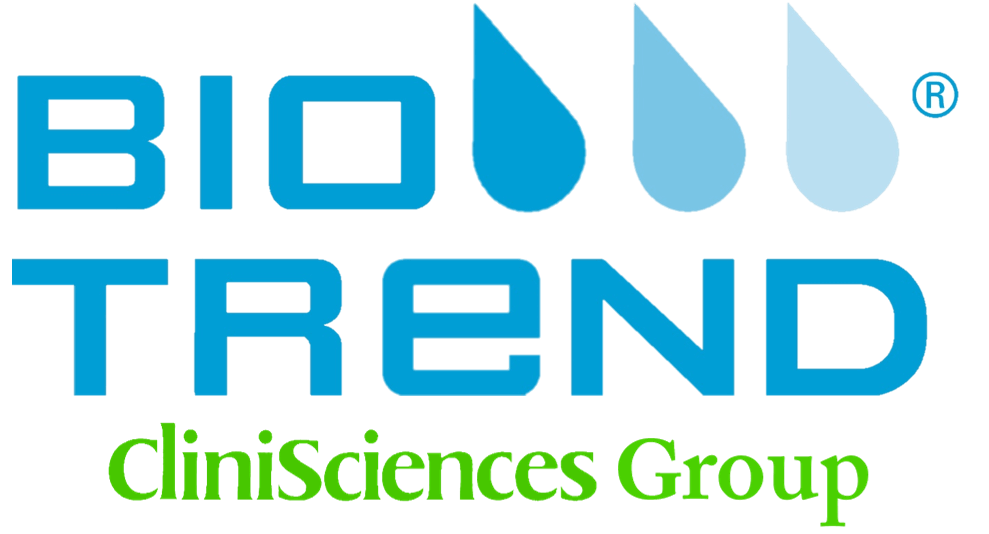Tumor Necrosis Factor Alpha (TNF-Alpha) BioAssay™ ELISA Kit (Rabbit)
Katalog-Nummer 530089-96T
Size : 96Tests
Marke : US Biological
530089 Tumor Necrosis Factor Alpha (TNF-Alpha) BioAssay™ ELISA Kit (Rabbit) discontinued
Clone Type
PolyclonalShipping Temp
Blue IceStorage Temp
4°C/-20°CThis Tumor Necrosis Factor Alpha (TNF-Alpha) BioAssay™ ELISA Kit is a sandwich ELISA for the in vitro quantitative determination of TNF-Alpha concentrations in rabbit serum, plasma and other biological fluids.||Detection Range:|15.63-1000pg/ml||Sensitivity:|9.38pg/ml||Precision:|Intra-Assay %CV: <10%|Inter-Assay %CV: <10%||Specificity:|Recognizes rabbit TNF-Alpha. No significant cross-reactivity or interference between rabbit TNF-Alpha and analogues was observed.||Test Principle:|The micro ELISA plate provided in this kit has been pre-coated with an antibody specific to rabbit TNF-Alpha. Standards or samples are added to the micro ELISA plate wells and combined with the specific antibody. Then a biotinylated detection antibody specific for rabbit TNF-Alpha and Avidin-Horseradish Peroxidase (HRP) conjugate are added successively to each micro plate well and incubated. Free components are washed away. The substrate solution is added to each well. Only those wells that contain rabbit TNF-Alpha, biotinylated detection antibody and Avidin-HRP conjugate will appear blue in color. The enzyme-substrate reaction is terminated by the addition of stop solution and the color turns yellow. The optical density (O.D.) is measured spectrophotometrically at a wavelength of 450nm ± 2nm. The O.D. value is proportional to the concentration of rabbit TNF-Alpha. You can calculate the concentration of rabbit TNF-Alpha in the samples by comparing the O.D. of the samples to the standard curve.||Kit Components:|Microtiter Strips, 1x96 wells, Pre-coated; ready to use|Reference Standard, 2 vials|Concentrated Biotinylated Detection Ab (100×), 1x120ul|Concentrated HRP Conjugate (100×),1x120ul|Reference Standard & Sample Diluent, 1x20ml|Biotinylated Detection Ab Diluent, 1x14ml|HRP Conjugate Diluent, 1x14ml|Concentrated Wash Buffer (25×), 1x30ml|Substrate Reagent, 1x10ml|Stop Solution, 1x10ml||Storage and Stability:|Unused kit is stable for 6 months after receipt. Store Microtiter Strips, Standard, and Antibody-Biotin at 4°C if kit will be used within 30 days; otherwise store at -20°C until expiration date. Store the rest of the components at 4°C. Protect HRP Conjugate and Substrate Reagent from light. For maximum recovery, centrifuge the original vials after thawing and prior to removing the cap.||Assay Procedure Summary:|1. Prepare all reagents, samples and standards.|2. Add 100ul standard or sample to each well. Incubate 90 minutes at 37°C.|3. Aspirate and add 100ul prepared Biotin Working Solution. Incubate 1 hour at 37°C.|4. Aspirate and wash 3 times.|5. Add 100ul prepared HRP Detection Working Solution. Incubate 30 minutes at 37°C.|6. Aspirate and wash 5 times.|7. Add 90ul Substrate. Incubate 15 minutes at 37°C.|8. Add 50ul Stop Solution. Read at 450nm immediately.



